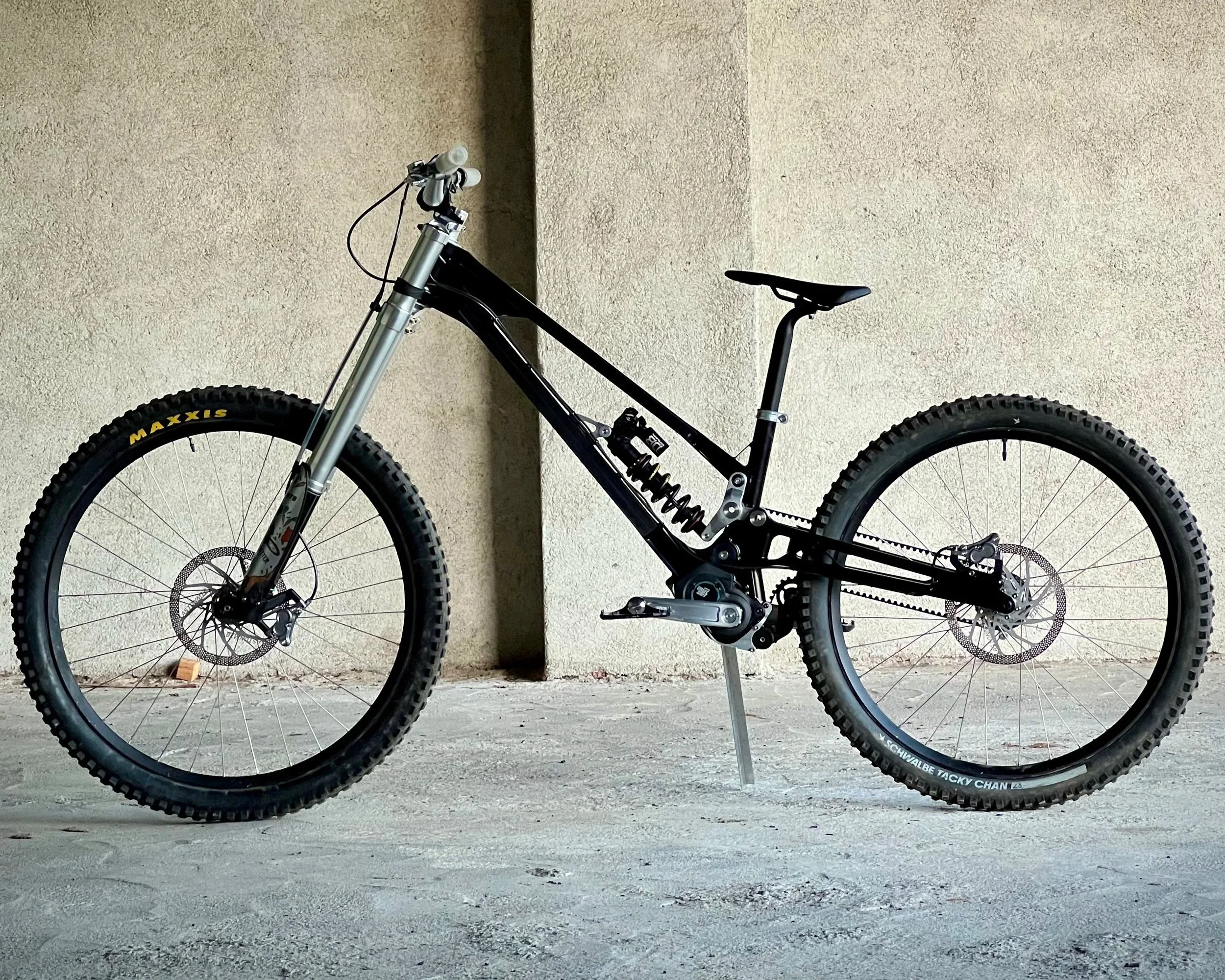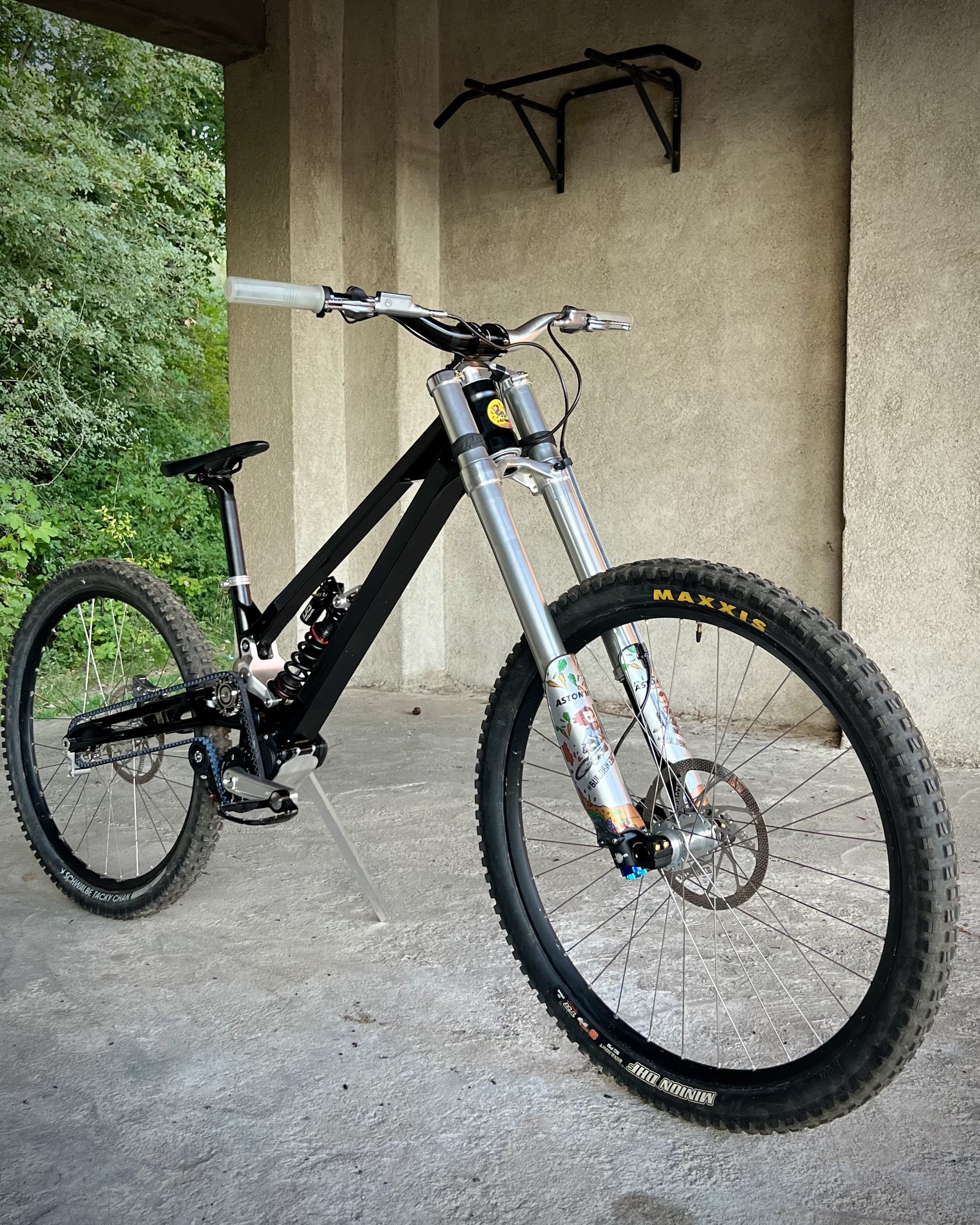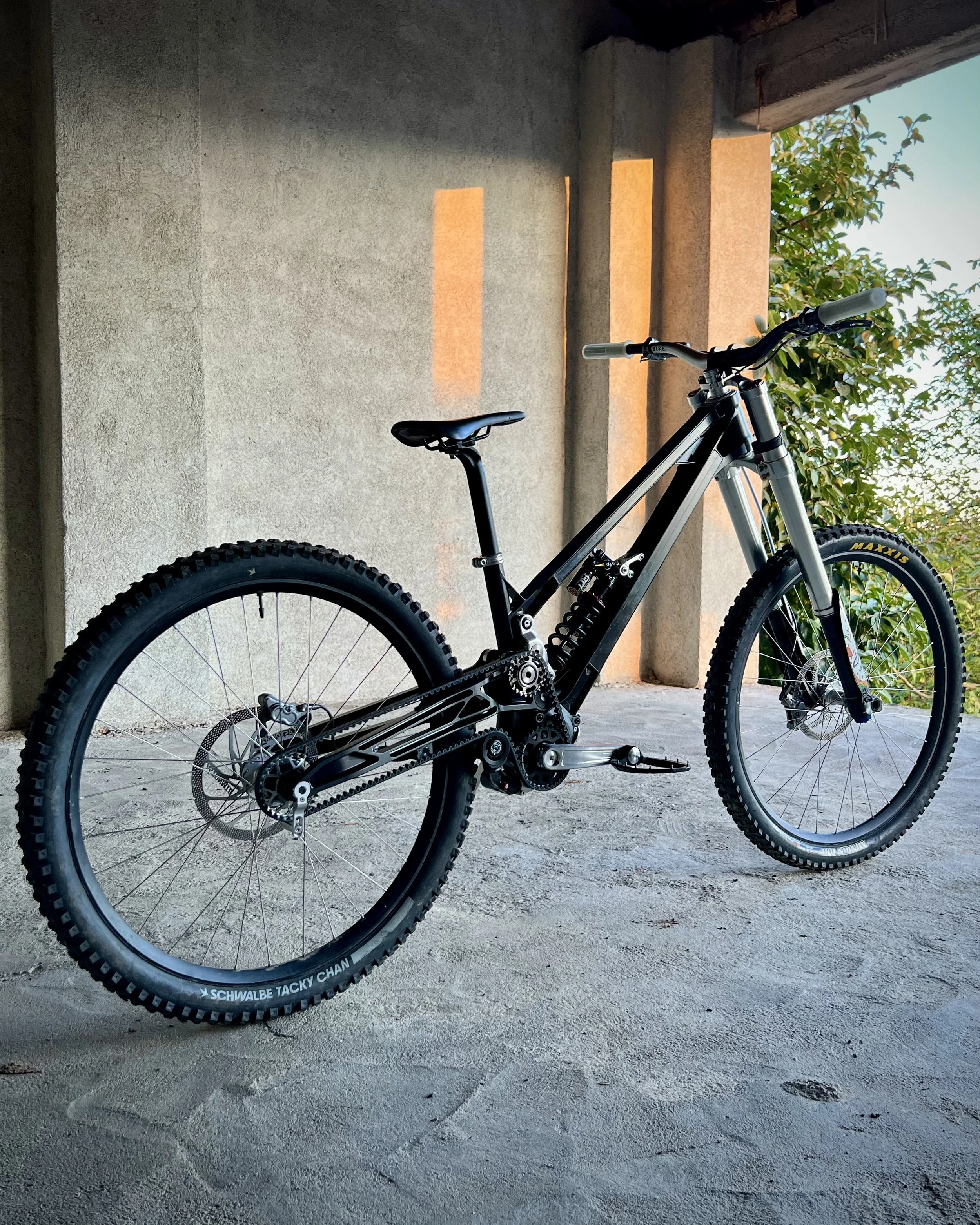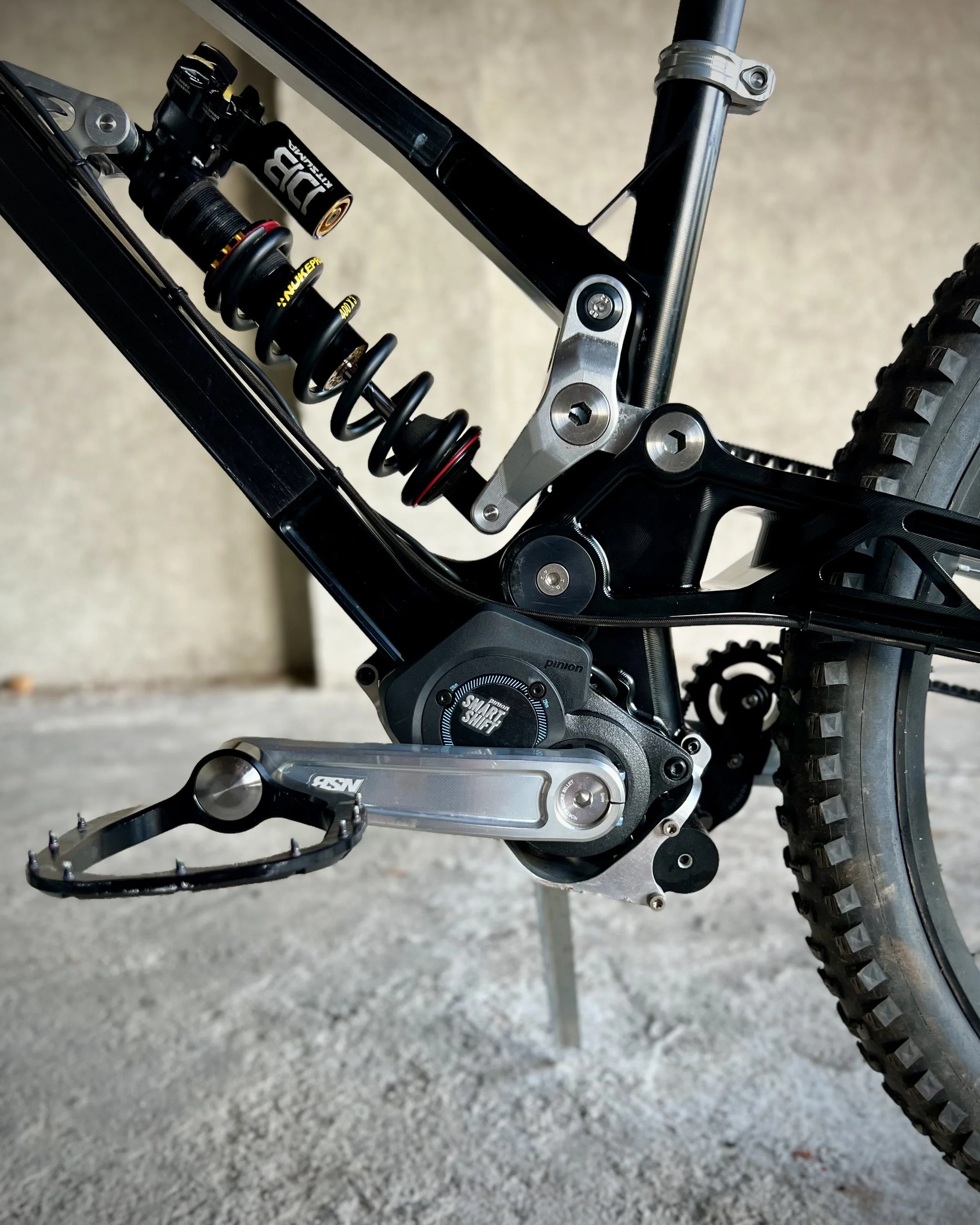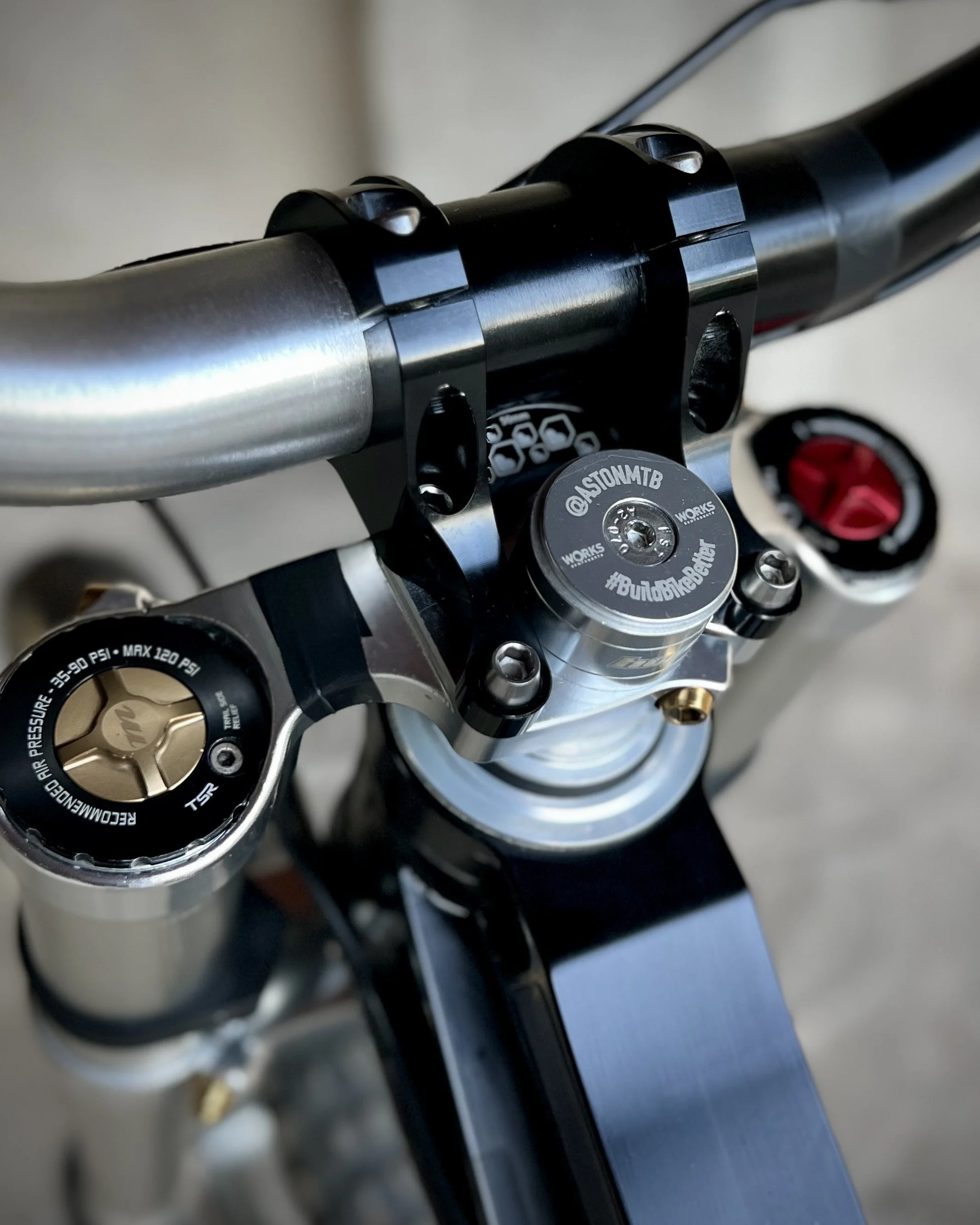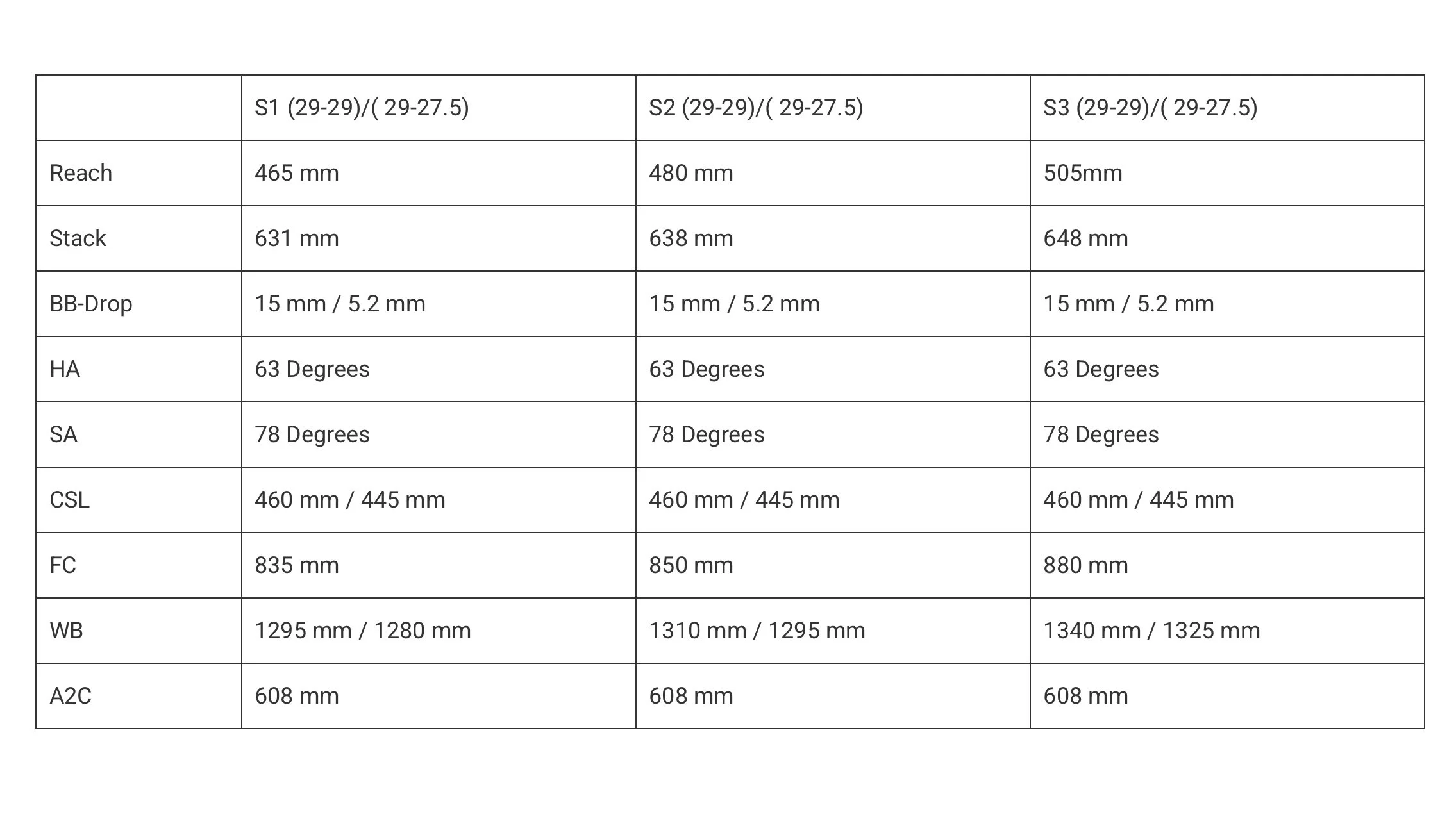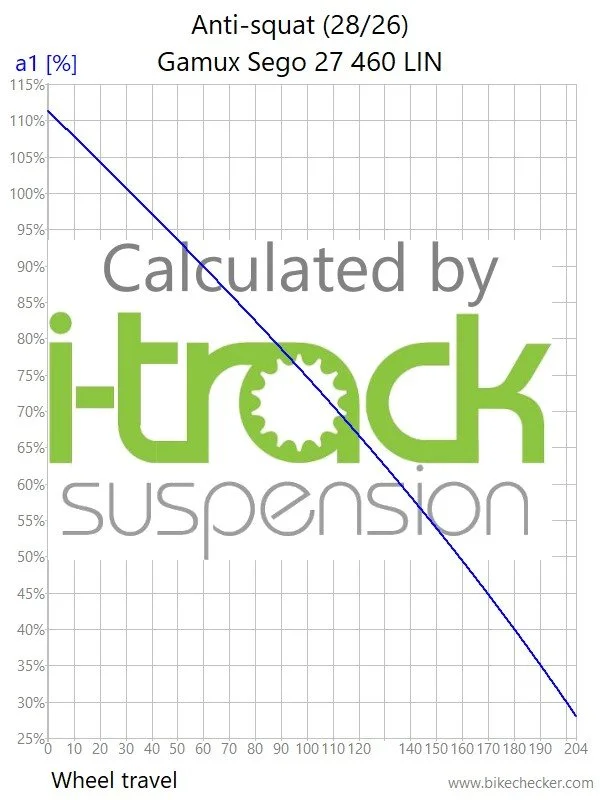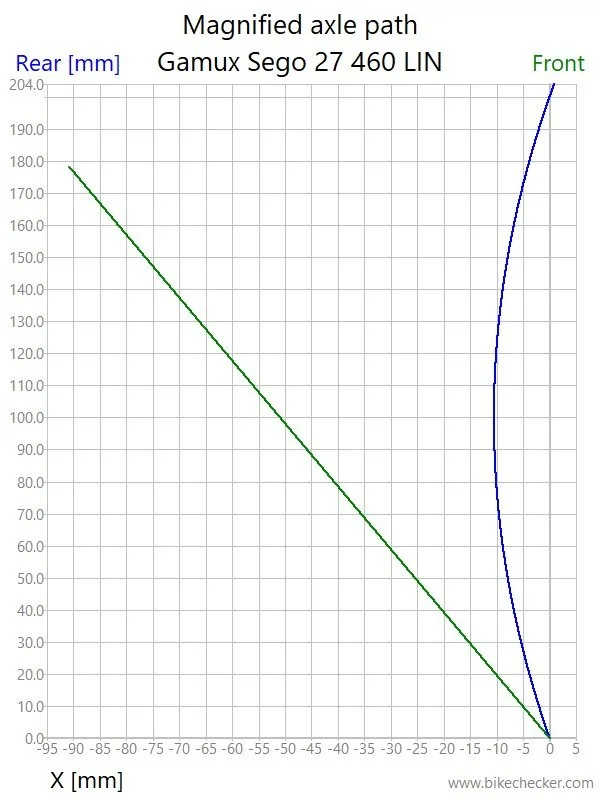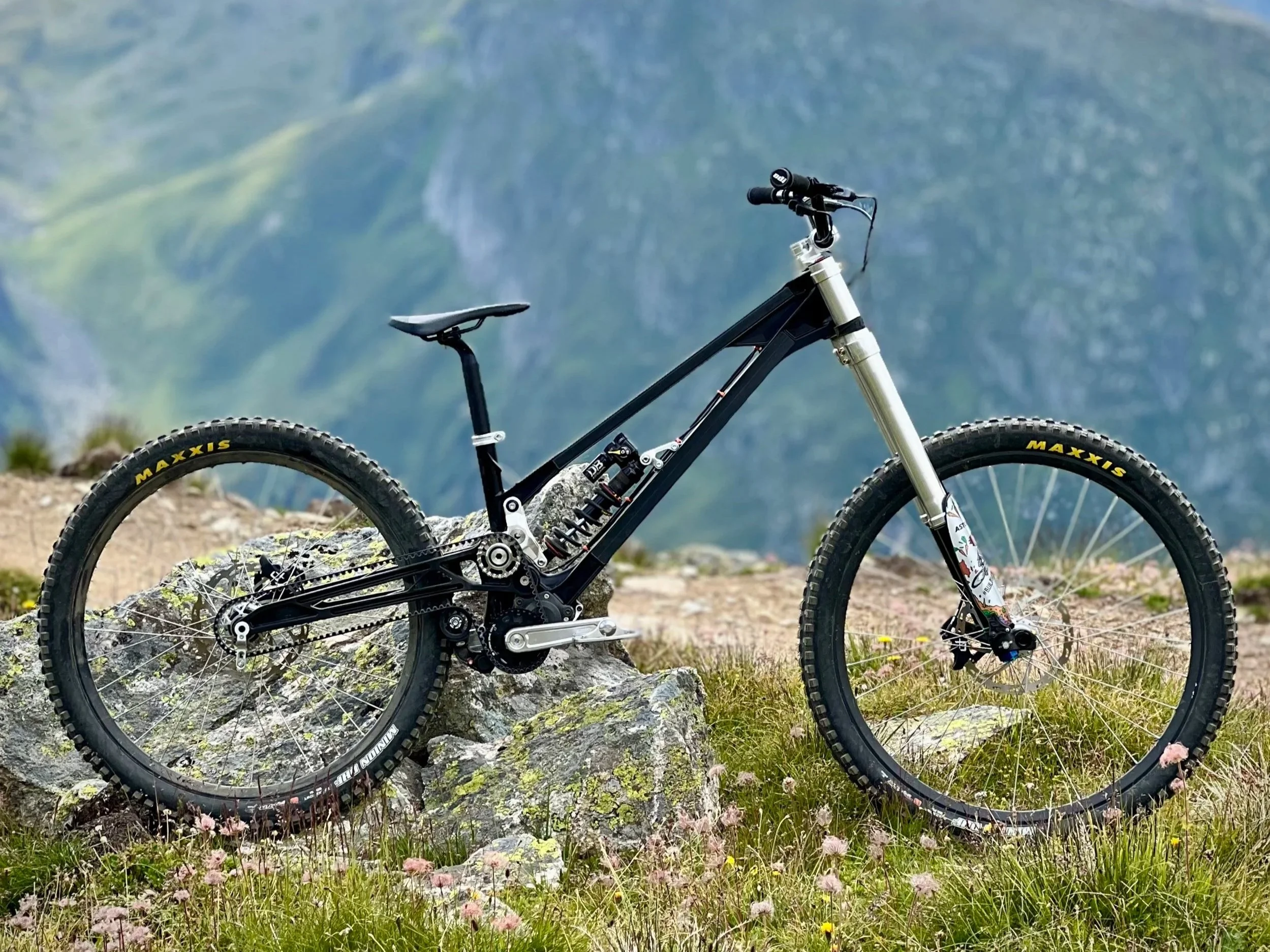2025 Gamux Sego Review: A Downhill Spaceship
Funding
Let’s get business out of the way before you read this independent review!
I buy all the products you see on my site at full price or through online sales and these reviews are 100% crowdfunded by you guys buying competition tickets.
For example, this month you can win a pair of HelPerformance Advocate brakes + your very own brand-new GAMUX SEGO frame, just like this one reviewed here! To win, all you need to do is head to my Raffall page, answer a simple question and you have an extremely good chance to win. These competitions fund my reviews which I believe are the only truly independent MTB reviews online.
Introduction: More Spaceship than Bike
Basking…
This isn’t just a mountain bike—it’s a spaceship. Crafted in CAD by some Swiss dudes with a years-old passion for creating the ultimate downhill racer, the Gamux Sego is no-holds-barred engineering at its finest, carved from huge blocks of 7075-T6 alloy. I bought this and picked it up at the Gamux HQ near Zurich. After 20 days of shredding bike parks and natural terrain across the Alps, I’m ready to share why this bike has been so awesome.
Build and Design: Precision Engineering
Frame and Construction
The Sego is a masterpiece, machined from two giant blocks of 7075-T6 aluminium, eliminating welds and weak points, and allowing freedom over its form. Square carbon tubes are bonded into the mainframe for added stiffness and vibration damping on both sides of its I-beam structure. The black anodised finish with silver accents keeps it sleek and smart.
Drivetrain and Components
A 6spd Pinion Smartshift gearbox sits nestled in the frame, with battery and cables hidden inside for a clean look. A two-piece link drives the shock, and the Gates Belt is oil-free and self-cleaning. I built mine with my favourite parts: a limited-edition Rulezman Dorado RRT fork, Kitsuma shock, Hope hubs on EX471 rims, and a few other choice components. Finished off with the ultra-minimalist shifter from Zirbel for a very clean machine.
I have been using Pinion gearboxes for a long time. I have a 12spd Smartshift box on my Ti-Ton-a-Tron and prefer that even for pure DH riding because the steps between gears are smaller: The Pinion 6 + 9spd versions have 24.3% steps between gears, where the 12spd has 17.7%. I heard some riders complaining about this at races during the summer, and I agree the steps are quite big. I prefer the smaller steps despite the 300g weight penalty, heavier but avoids ugly-duc(k)t taping lead to your frame! The Smartshift version also weighs about 250g more than the mechanical cable-shifted version.
The Smartshift version is a big improvement over the old mechanical gripshift (though I don’t mind the old version, still), you can change gear anytime at the light push of a button. I now make about 50% of my changes when I’m not pedalling but by predicting the terrain I can see incoming. The minimalist Zirbel shifter is a great addition, it’s a bit less precise to press than the standard trigger and I probably wouldn’t use it for racing, but for general shredding it’s fine.
Maintenance and Durability
The hardware is high-precision, with big bolts and torques—nothing even tried coming loose during testing. Brake hose routing is fully external, using zip ties in tiny drilled frame holes, and the belt can be easily removed tool-free first for simple rear wheel swaps. The smooth lines make cleaning a breeze and there’s little space to collect mud. The Gates belt is essentially maintenance and oil-free, it can get a bit squeaky when a few days of dust have accumulated, but a simple hose-down ends this. The Pinion gearbox only needs an oil change every 10,000km—potentially a lifetime of DH runs (about 20m of pedalling per run, and the change takes 5 minutes).
Minor Hiccups
I noticed a slight rattle, likely the charging cable in the seat tube, but otherwise the solid frame (no hollow tubes) keeps it extremely silent and echo-free. Fitting the Kitsuma shock was tricky—I had to remove the high-precision (read: very tight fit) upper shock mount, attach the shock, then reinstall due to spacing. Gamux uses Manitou Mara shocks with a lower-profile piggyback, but once installed, the Kitsuma’s adjusters were easily accessible.
Geometry and Setup: Dialled for DH
Frame Geometry
The Sego’s geometry is spot-on for a modern DH bike (per Gamux’s specs: S2 size with 480mm reach, 631mm stack, and my choice of the longer 460mm swingarm). I opted for a less progressive linkage (22% vs. the standard 33%). The high front-end setup with the Surly Sunrise handlebar had me feeling like Jackson Goldstone: upright and in control. The BB (maybe we need to find a new name, like Pinion Crank Axle Center: PCAC) is quite low with the Pendulum pedals, but when the suspension was dialled in, the ride height was spot-on.
Suspension Setup
The rear suspension eats bumps like nothing else, thanks to the unsprung/sprung weight ratio, pivot placement, and minimal pedal kickback. Initially, it dove too eagerly into its travel, so I dialled in less sag (25% vs. my usual 30-33%), added spring preload, and cranked up the compression damping. It felt a bit dead in car park tests but was unreal on the trail—stable, predictable, and still devouring bumps.
I matched this perfectly with 25% sag on the Dorado and the balance was awesome.
Ride Impressions: A Monster in the Rough
Downhill Performance
The first thing to note is how quiet and solid the Sego is. The entire bike just feels smooth and planted, but with exceptional small-bump and vibration absorption.
It gets up to speed quickly and pedals really well for a DH bike with the anti-squat around 90% at sag. Once rolling, it just wants to go faster and faster.
This bike is a beast in the rough stuff. The much talked about compliant rear end isn’t springy or unpredictable like some tubular alloy frames—it just charges through anything you dare to hit. I had barely any sketchy moments on this bike, even when pushing my limits, including tailing World Champ Danny Hart in Verbier. The Sego gave me a new level of confidence and composure.
Once dialled, the rear end synced perfectly with the Dorado RRT fork, both wheels tracking flawless lines and giving the confidence to literally ride across any camber your nervous system can allow. The added damping and preload made it firm for cornering and responsive to direction changes, while still maintaining that bump-eating prowess. This thing absolutely rails any kind of corner, from tight berms to fast, long, and rough radii.
Under braking, it is also excellent, with zero pedal kickback. Add this to the semi-high pivot, and the compliant swingarm meant great braking traction on the roughest sections and good chassis stability. The anti-rise is around 120% at sag which is spot-on.
It’s a race bike through and through—built to go fast and stay planted. That said, the smoothness, comfort, and ease to ride this bike makes it ideal for any rider in any bike park.
Pros and Cons
What I Loved
Unmatched engineering: machined aluminium, carbon tubes, and integrated Pinion gearbox.
Faultless durability: nothing loosened, even after 20 days of hard riding.
Easy maintenance: external routing, simple belt removal, and a clean design.
Insane performance: eats bumps, tracks perfectly, and boosts confidence.
Silent and solid: no echoes, just a damped, planted ride.
What Could Be Better
Minor rattle from the charging cable in the seat tube (needs hunting down and quieting with foam)
Tight shock fitment.
No dropper post capability, limiting versatility for pedally missions (but it is a pure DH-racer)
Price: 6,700 CHF (~£7,500/€8,500 with EU import) is steep for the frame + complete drivetrain. The build pictured here would cost around €15000.
Reader Questions
I asked for your questions on Instagram, here I answer the most important ones:
Follower Q1: I’d be interested in hearing about the chassis compliance versus other bikes on the market in production and how do you think construction of this frame effects the feel to the rider compared to other bikes on the market or other material bikes you ride: Al, Ti, steel, full carbon?
Compared to a tubular alloy frame this definitely has a different feel with its solid structure it’s more damped and predictable. It does feel more like steel or Ti frames, but still keeps the response of alloy.Follower Q2: Is this the ultimate step of bike design? Is this peak performance?
Who knows where things will go in the future, but it’s a pretty special machine. For mass production I guess it isn’t the most efficient way to build at the moment, but for high-end race bikes it must be close.Follower Q3: Is it just a pure dh race machine or also a good bikepark allrounder ?
It’s definitely a great all-rounder with its ride quality, simplicity and reliability.Follower Q4: Have you ridden it in the mud, if so did it throw the belt?
In my experience, I have only had one single problem with the belt and mud. If you ride pure DH in very muddy conditions, not pedalling often, mud can build up and clog, which has happened to me only once in a decade of Pinion+Gates use. The belt and teeth are actually shaped to be self-cleaning, which is awesome. After long pedals even in the worst conditions, you get home with a clean and polished belt and sprocket surfaces. Keep spinning those cranks when you can to clear out the mud. Bonus: this handily keeps your leg muscles fresher on descents.Follower Q5: Can you change the carbon inserts in the front triangle and have you experimented with that?
No, these are factory fitted and bonded into the frame.Follower Q6: How’s it pedal compared to your Egerie’s and the Starling.
It pedals very well for a DH bike - I really wish it had dropper capability to give it a wider range of use.
Follower Q7: The ultimate question is would you truly recommend that this bike is a good bike to buy?
Yes.
Follower Q8: What type of rider would enjoy this bike?
Pretty much everyone who likes descending!
Verdict: The Ultimate DH Weapon
The Gamux Sego is hands-down the best DH bike I’ve ever ridden—one of the best bikes, period. It’s a precision-built monster that thrives in the gnarliest terrain, delivering confidence and control I didn’t know I had. If it had a 12-speed gearbox and dropper post option, it’d be perfect for more than just bike park laps—think 30-minute pedals to the good stuff. The price is astronomical (£7,500 after import), but to become an astronaut on a spaceship like this, it’s worth it.

